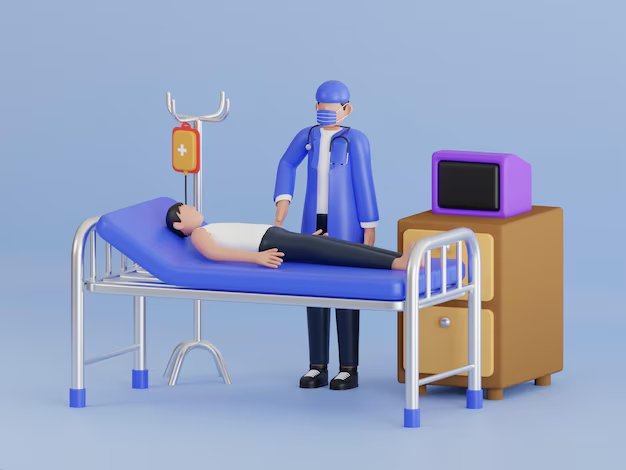Recovering from surgery is not just about healing the wound. It’s about regaining strength, preventing complications, and rebuilding confidence in daily life. Traditionally, this required multiple in-person visits to hospitals. For many patients, these visits meant long travel, waiting rooms, and exposure to hospital-related infections.
Today, virtual follow-ups—powered by telemedicine—are changing that experience. They bring the hospital to the patient’s home, allowing real-time monitoring, professional support, and guidance without unnecessary stress.
This article explains how virtual follow-ups improve recovery, supported by research, real patient cases, and practical insights from healthcare professionals.
Why Post-Surgery Follow-ups Are So Important
A successful surgery is only the first step. The weeks after surgery are often just as critical.
Risks of Poor Follow-up
- Infections: Surgical site infections account for 20% of all hospital-acquired infections (CDC).
- Delayed healing: Missed wound checks may lead to unnoticed complications.
- Hospital readmissions: Lack of proper monitoring raises the likelihood of a patient being readmitted.
What Follow-ups Usually Cover
- Checking the wound site.
- Adjusting medications.
- Managing pain.
- Reviewing lab results or imaging.
- Guiding physiotherapy and exercise.
- Addressing emotional well-being.
Rise of Virtual Follow-ups
Virtual follow-ups use secure apps, video calls, and remote monitoring devices to replace or reduce in-person visits.
Core elements of a virtual post-surgery checkup:
- Video consultation – to inspect wounds or swelling.
- Digital uploads – patients can share lab reports or wound photos.
- Remote monitoring tools – wearable devices track vitals like heart rate, oxygen, and blood pressure.
- Asynchronous support – secure chat for questions outside appointment times.
According to a 2023 NIH study, telemedicine adoption for post-surgery patients reduced hospital visits by over 35% while maintaining equal or better patient satisfaction (NIH).
Benefits of Virtual Post-Surgery Follow-ups
1. Convenience & Comfort
- No travel when mobility is limited.
- Easy scheduling without missing work or family obligations.
- Ideal for the elderly or patients in rural areas.
2. Lower Risk of Infection
Hospitals carry germs. Virtual care reduces unnecessary exposure, which is especially important after surgeries with higher infection risks (e.g., C-sections, orthopaedic implants).
3. Cost Savings
| Cost Category | In-person Visit | Virtual Follow-up |
|---|---|---|
| Transport | $20–100 | $0 |
| Consultation Fee | $150–200 | $50–70 |
| Time Lost (work hours) | 3–6 hours | 30–45 minutes |
4. Faster Adjustments to Treatment
Doctors can review daily progress and modify care instantly, reducing complications.
5. Emotional Support
Patients often feel isolated after surgery. Quick access to professional reassurance lowers anxiety.
Real-Life Cases
- Orthopaedic Surgery (Knee Replacement): Patients using video physiotherapy sessions reported 20% faster improvement in mobility compared to those relying only on hospital visits.
- Post-Cesarean Recovery: Virtual wound checks helped new mothers avoid stressful travel, while also giving breastfeeding and mental health support.
- Cardiac Surgery: Wearable ECG monitors connected to telehealth platforms helped doctors detect early arrhythmia in recovering patients, preventing emergencies.
Data: Virtual Follow-ups in Numbers
| Metric | Traditional Care | Virtual Care |
|---|---|---|
| Patient satisfaction | 75% | 90%+ |
| Missed appointments | Higher (20–30%) | Lower (<10%) |
| Complication detection time | Slower | Faster |
| Hospital readmissions | 15–20% | 8–12% |
Sources: CDC, NIH Telemedicine Studies, Mayo Clinic
Surgeries That Benefit Most from Virtual Follow-ups
Orthopedic Surgeries
- Joint replacements, fractures, spinal surgeries.
- Virtual physiotherapy accelerates recovery.
Obstetric & Gynaecological Surgeries
- C-sections, hysterectomies.
- Wound checks + breastfeeding guidance.
Cardiac & Vascular Surgeries
- Heart bypass, stents, valve repairs.
- Remote monitoring of vitals is lifesaving.
General Surgeries
- Gallbladder, appendix, hernia.
- Easier wound tracking, quicker discharge.
Challenges of Virtual Follow-ups
- Not a replacement for emergencies – severe pain, fever, or bleeding still require hospital visits.
- Digital divide – limited internet or smartphones in rural areas.
- Insurance coverage gaps – telemedicine is not covered everywhere.
- Quality variation – not all platforms have trained specialists.
Tips for Patients
- Confirm your hospital or surgeon offers telemedicine.
- Ask if the platform is HIPAA/GDPR compliant for data privacy.
- Take clear photos of wounds before the call.
- Use good lighting for video visits.
- Keep a daily log of pain, swelling, and temperature.
- Always have an emergency plan in case symptoms worsen.
Future of Post-Surgery Virtual Care
- AI-assisted wound analysis: Apps that detect infections early by analysing wound photos.
- Wearable sensors: Continuous tracking of heart rate, blood oxygen, and movement.
- Virtual rehabilitation gyms: Patients perform exercises at home with real-time feedback.
- Integrated insurance coverage: More governments are starting to include telehealth in standard healthcare plans.
Final Thoughts
Virtual follow-ups are not about replacing in-person care—they’re about making recovery smoother, safer, and more accessible. They provide comfort, cost savings, faster treatment adjustments, and peace of mind for patients and families.
As technology grows, virtual recovery will become the norm, not the exception.
For trusted information, see:
- WHO – Surgery Safety
- CDC – Surgical Site Infections
- NIH – Telemedicine Studies
- Mayo Clinic – Telehealth

